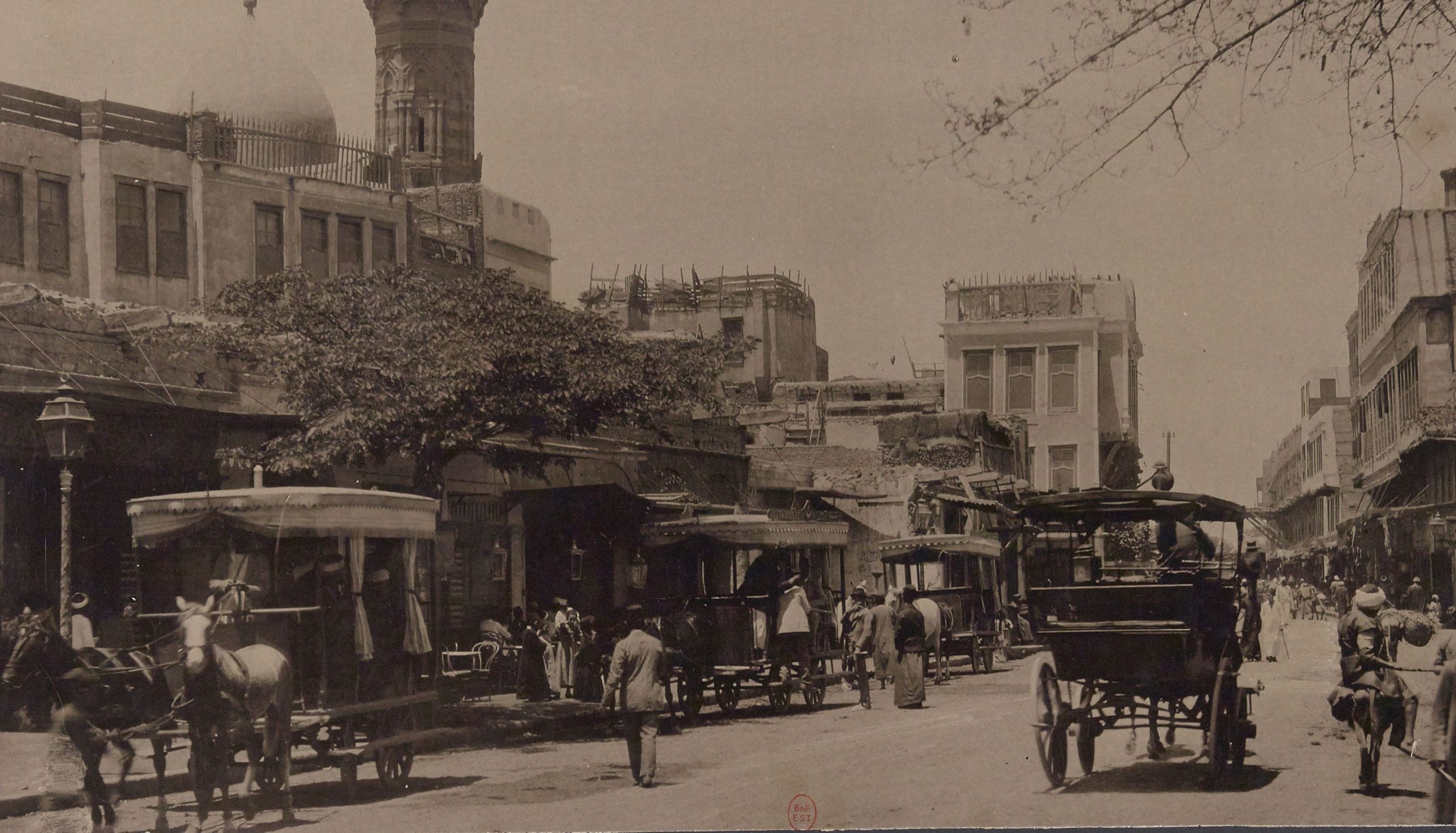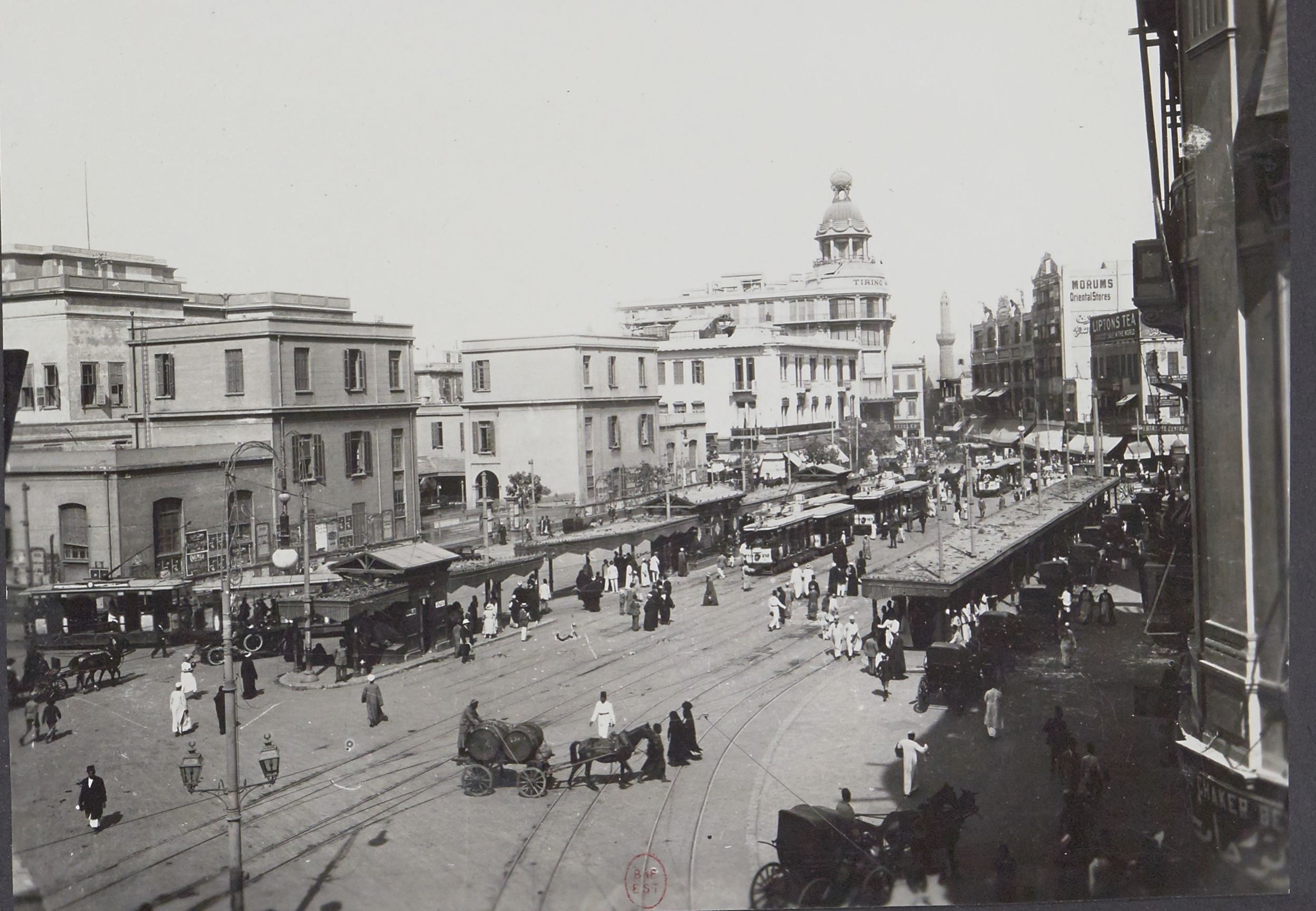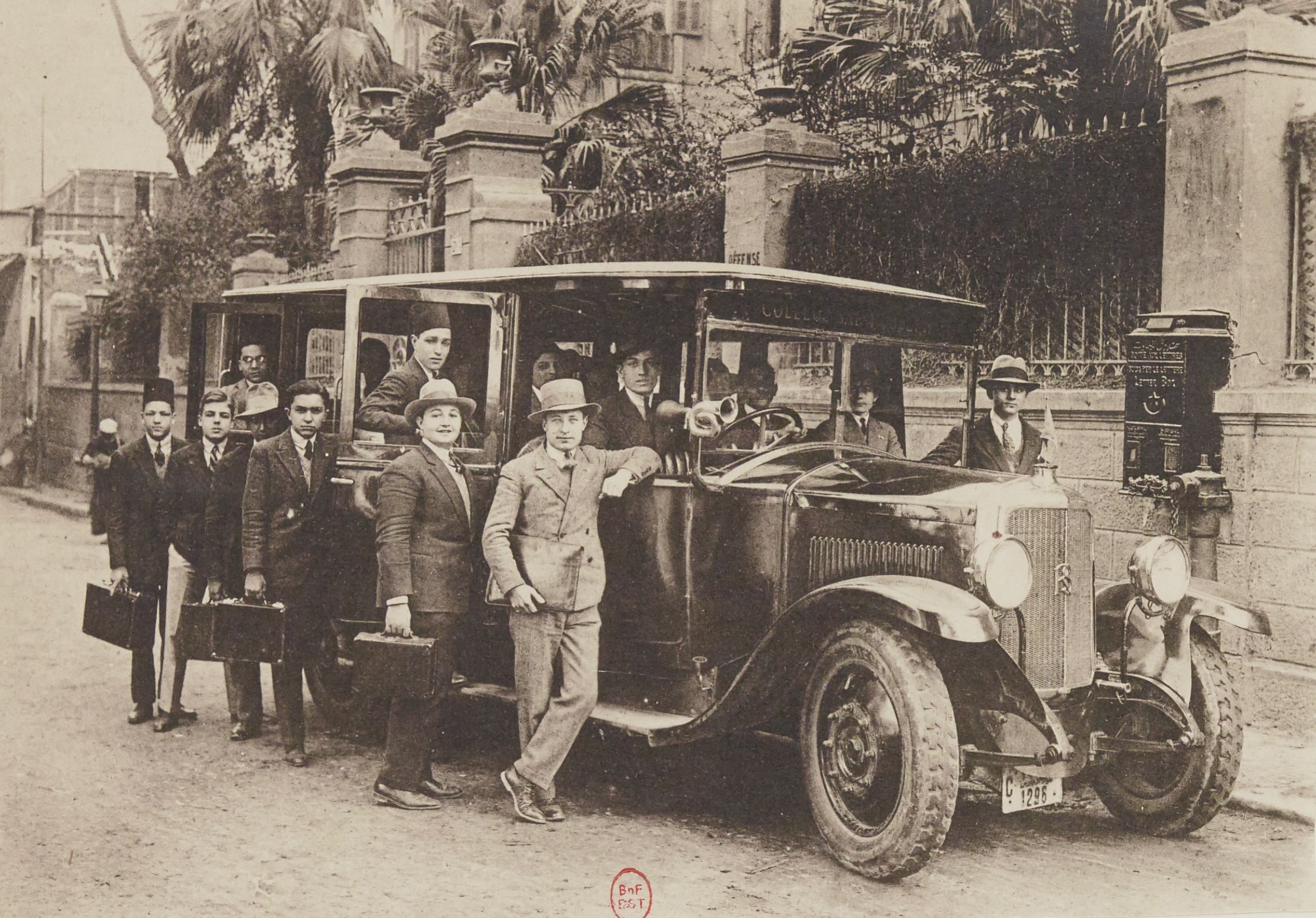In 1901, a lawyer advertised the public sale of the belongings of ‘Adila hanım, the wife of Yusuf ‘Azmi bey. A jewelry firm asked the court to sequester the properties because ‘Adila hanım did not pay her 19,479 qirsh debt. Among the properties was an “electric car (an automobile)” and a small black pony (Al-Ahram, 20 December 1901, p. 4). If we consider that the limited production of cars (presumably such was the meaning of an “electric” automobile in private ownership) started in 1890s in Europe and the US the fact that ‘Adila hanım and Yusuf ‘Azmi already lost one in 1901 shows a quite globalized bourgeoisie in occupied Egypt.
A history of air pollution in Cairo may start in many ways but it should certainly include the appearance of cars in the city. Like in this picture, as everywhere, carts and carriages (hintur), were the nineteenth-century ordinary and elite transports. The post-1860s transformation of khedivial Cairo and the new, designed districts from the 1890s provided wide and long streets and avenues for trams (streetcars), and soon, for the automobile. A whole sub-industry of carters and cabbies developed in the city, among them automobile drivers, who were numerous enough to participate as automobile drivers in the 1907 strikes (Chalcraft, The Striking Cabbies, 176).
It is unclear when the first automobiles (in the ownership of the British occupiers and the khedivial elite) arrived in Cairo but it appears there was certainly one in 1901. Egyptian car enthusiasts (like this Egyptian Youtuber) usually mention Prince ‘Aziz Hasan, who allegedly brought from England the first car to Alexandria in 1890. Others provide the date of 1897. It appears that cars were mainly imported from Britain and had left-driver seats. In Alexandria, there were 56 automobiles in 1905 (Barak, “Scraping,” 198), and the khedivial princes established an automobile club in 1906. Cars necessitated pavement, regulations, new senses of direction. Automobiles did not push animal power out of the city. They have been co-existing with animal carts, bicycles, and trams ever since in the Egyptian cities and Cairo, for instance, in this picture from 1913.
One consequence of the appearance of automobiles, owned by the rich elite, were incidents such as when an Italian driver killed an Egyptian and injured others in 1909 (Al-Ahram, 9 June 1909, p. 2). Next, during the First World War, cars proliferated in Cairo , Alexandria, and the countryside. The war authorities regulated automobile permits in 1915 in countryside towns as well (Al-Ahram, 27 November 1915, p. 4). Here is a Cairo picture in 1915. By the 1920s, cars became a part of the Cairo traffic – and indeed, “traffic” became a new urban term and phenomenon – as companies and schools also had their own cars and buses. In this picture, presumably the graduating class of the Collège Saint Joseph is posing with the college’s car in 1929. The plate is number 1295 and this suggests that cars were not very numerous in the city in the 1920s.
Bibliography:
Al-Ahram
Chalcraft, John T.. The Striking Cabbies of Cairo and Other Stories Crafts and Guilds in Egypt, 1863-1914. Albany: State University of New York Press, 2004.
On Barak, “Scraping the surface: the techno-politics of modern streets in turn-of-twentieth-century Alexandria,” Mediterranean Historical Review 24, 2 (2009): 187-205.
(A.M.)




Comments are closed, but trackbacks and pingbacks are open.